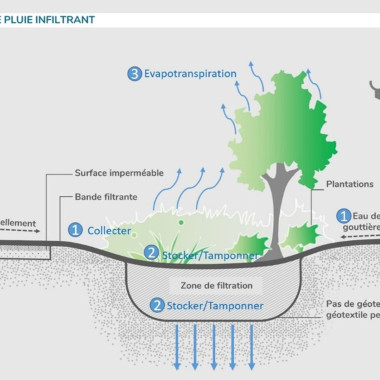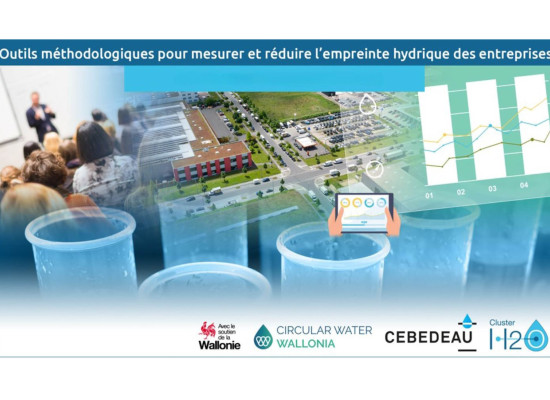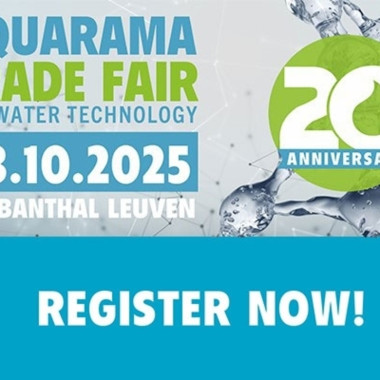Water Smart Cities Project
Article

Article

The Water Barometer is a tool enabling companies to estimate their vulnerability and impact with regard to the availability of water sources, using dedicated indicators. By means of a simple questionnaire and an analysis of water requirements and flows within the company, it is now possible to obtain a detailed view of the strengths and weaknesses of the water management system. This tool also enables the “water” dimension to be taken into account right from the design stage of new production lines, and offers avenues for improving and reinforcing this essential aspect.
The result of collaboration between VITO and CEBEDEAU, the “Water Barometer” takes the form of a web platform. On this site, it is possible to enter information specific to a given company in order to obtain various analyses concerning water management.
Link to the plateform : www.barometredeleau.be
You can also download the complete leaflet
The “mass balance” method is used to analyze water flows within a company. From the moment it enters the site to its discharge into the sewer system or the natural environment, flows are mapped, taking care to equalize incoming and outgoing quantities. The heart of the analysis is the identification of water requirements for production processes, whether cooling water, washing water, water used as an ingredient in the manufacture of products, irrigation water or any other form of use. For every need has a corresponding quality, from the pure water used in the design of pharmaceutical products, through food-grade water, to water of equivalent quality to surface water used for washing. Once the required quality has been identified, it is then possible to determine which sources or deposits are suitable for each process.
It is also the use to which the water is put that determines how it is returned, whether to the sewage system or to a treatment process that enables it to be returned to the natural environment. The fraction returned to the natural cycle, including through sewers and collective treatment plants, is also counted by the Water Barometer. The information gathered in this way is used to calculate impact and vulnerability indicators.
The “Water Barometer” is designed to raise company managers' awareness of water flows on their site. These visualization tools enable managers to communicate effectively within their structure to improve understanding of water-related issues.
Knowledge of the company's water consumption is a prerequisite for any rationalization of water use. Theoretical knowledge alone is not enough, as it cannot uncover and resolve anomalies such as leaks or inappropriate use. That's why we recommend the use of appropriately located sensors. For optimum results, these sensors and meters send their data back to a central management software program, which enables data to be easily consulted, indicators to be calculated and forecasts to be made. The targeted parameters are, of course, flow rates, but also quality parameters such as turbidity, chlorine content, salinity, etc., depending on the needs of the process chains and the company in general.
The Water Barometer makes it easy to identify which parameters need to be measured, and at which point(s).
The quantity of water used is not the only factor impacting pressure on the resource. Where it is collected also plays a major role. Water from precipitation is distributed between different sectors, such as groundwater (aquifers) and surface water (lakes and rivers). It will have taken more precipitation to supply the same amount of water to groundwater than to surface water, for example. Similarly, if we can capture rainwater before it evaporates, we make significant savings, in the sense that the same withdrawal from another area would take longer to replenish. However, water quality also varies from one area to another, and the best quality water is often to be found in areas with the least water supply. Using the right water quality for the right use is therefore an excellent way of reducing pressure on resources.
Alternative water sources (sometimes called “unconventional”) include :
One of the aims of the Water Barometer is to highlight these alternatives and make it easier to calculate and compare them, for the benefit of both companies and the environment.
The development of this tool required advanced reflection on the indicators to be used to quantify the risk incurred by companies with regard to their water supply system. The proposed impact indicator focuses primarily on the pressure exerted by companies on the availability of water resources, rather than on pollution risks.
In addition to fairly standard indicators (volumes withdrawn and returned), an original indicator has been proposed. It calculates, in hectares, the equivalent surface area that would be required to collect a volume of precipitation to meet the company's annual demand. It takes into account the water returned to the natural environment and the reservoirs (groundwater, surface water, etc.) from which the water was drawn. This provides an easily comparable quantity between companies, which can then be related to the company's production (quantities) or sales.
An “impact score” can be calculated from this information to inform companies about their regional water footprint.
A special focus is placed on water reuse, and an indicator is also dedicated to this aspect.
Article

Article

Event
